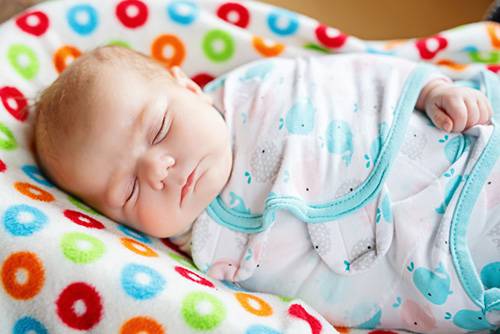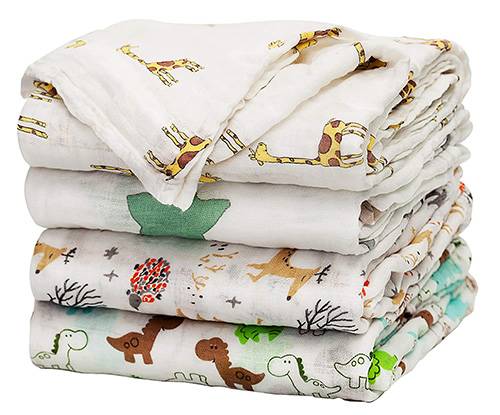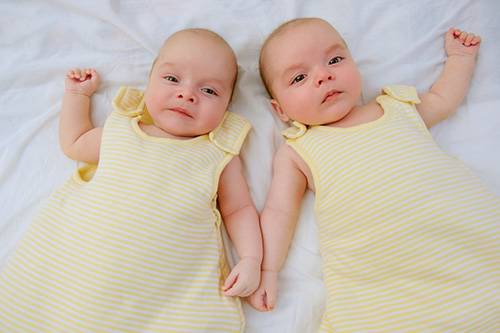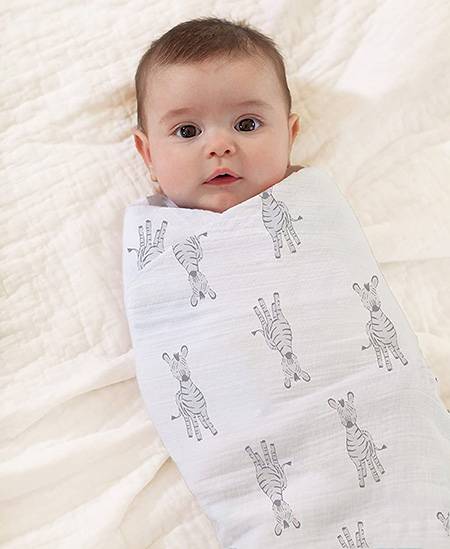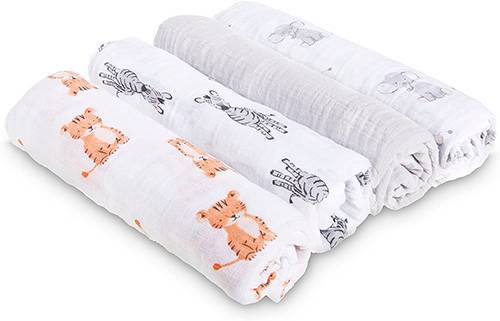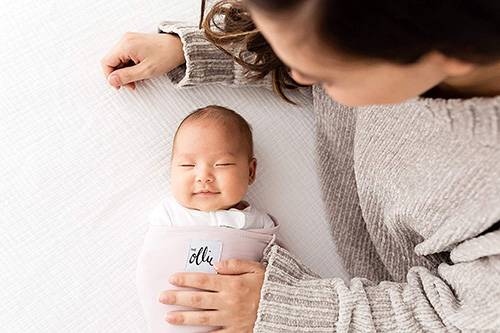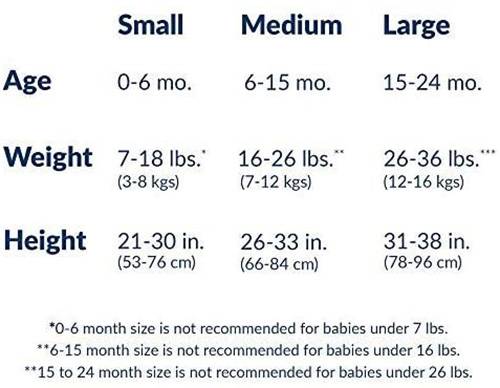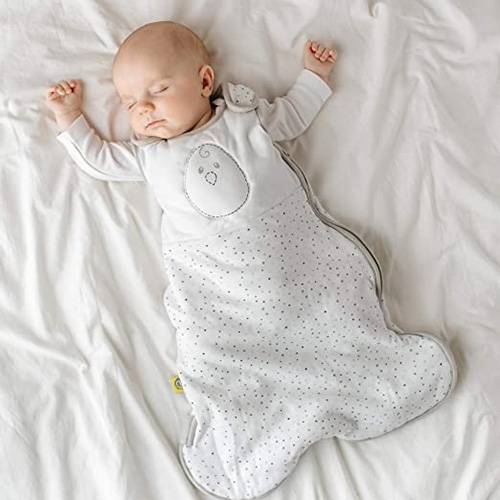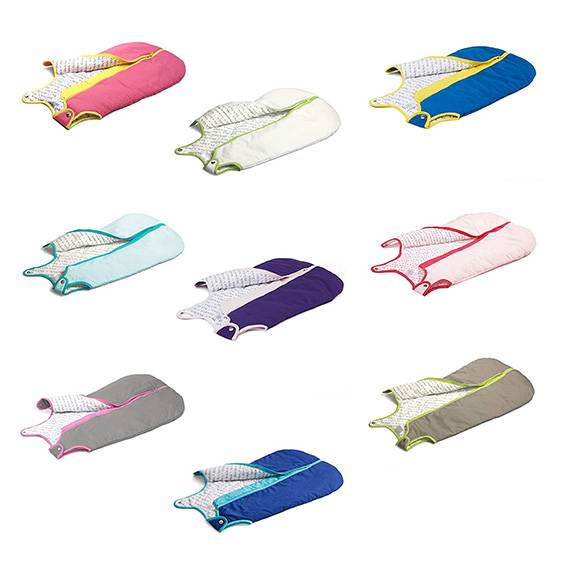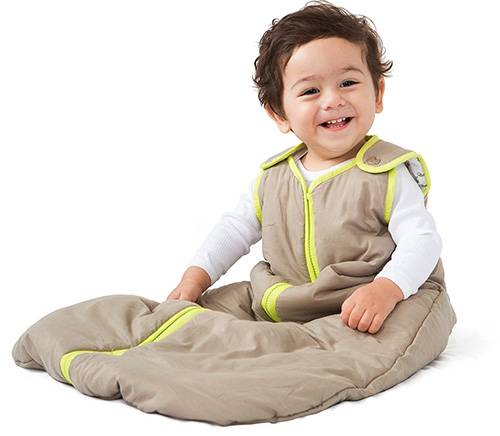So, you’re expecting. Congratulations!
If your life is starting to feel like a flurry of emotions and events, you deserve to know that you’re not in this alone. We understand that you want to create the best possible environment for your newborn and learn all the best ways to keep him or her cozy and safe.

Who knew that a swaddle and a sleep sack were two different things? How are you supposed to figure out which one to use? Does it really matter, anyway?
To give you a hand here, we’ve compiled some information for you on the differences and similarities between swaddling blankets and sleep sacks. This information should help you make the best possible decision for you and your little one!
What is a swaddle?
First things first: The term “swaddle” does not refer to a specific item—rather, it refers to a method of safely wrapping your newborn up in a blanket. When you swaddle your baby, the blanket:
- is tight around your baby’s chest, but (a little) looser in the hip area.
- keeps your baby’s arms from jerking or moving around in their sleep.
- ensures your baby stays warm all night without overheating.
- gives your baby the impression of being in the womb.
Swaddling blankets are typically made of lightweight materials that will be comfortable on your baby’s skin. Popular materials include cotton, muslin, and bamboo.
Many babies sleep better at night when swaddled up in a blanket, making this a favorite option among parents. But there’s a caveat:
You’ll need to stop using a swaddle blanket for your baby once they start trying to roll over.
Babies normally enter this stage at around 4-6 months old, though some babies begin rolling over even earlier. If your baby manages to roll over while swaddled up, it could result in Sudden Infant Death Syndrome (SIDS).
In short: A swaddling blanket is a wonderful way to keep your baby snug and safe at night until they begin trying to roll over.
What is a sleep sack?
A sleep sack—often referred to as a “wearable blanket”—is kind of like a Snuggie for babies.
Some parents opt to use a sleep sack for their newborns instead of a swaddling blanket; others only begin using a sleep sack once their babies can no longer be swaddled.
This baby sleep solution is normally made from slightly warmer materials—such as fleece or wool—though you can find ones made from cotton as well.
Sleep sacks are well-loved in the parenting community for their ease of use compared to swaddling blankets. When using a sleep sack, you don’t need to worry about getting your little one swaddled “just so,” because it works more like a very secure (and very safe) sleeping bag. That means less hassle without compromising on safety!
Swaddles VS Sleep Sacks
Here’s a brief comparison between swaddles and sleep sacks for you.
Swaddle
Size
You can purchase swaddling blankets in numerous sizes, typically ranging from 40×40 inches to 48×48 inches. The important thing here is that you’re able to safely and snuggly wrap your baby in the blanket without leaving any excess cloth.
Comfort
Swaddling is comfortable and soothing for babies and toddlers. The warmth of the blanket and the snug wrapping makes them feel as though they are still in the womb, which in turn brings about a sense of familiarity and safety. As mentioned, swaddling blankets are made from soft and lightweight materials that will: 1) Keep your young’un warm without overheating them, and 2) feel comfortable against their skin.
Ease of Use
On the ease-of-use scale, swaddling blankets are more difficult to utilize than sleep sacks are. Swaddling your baby in a safe manner will require instruction, practice, and general caution. It’s important to ensure the blanket is swaddled securely around your baby with no excess cloth; you also need to make sure that your baby’s mouth or head cannot slip into the neck hole.
Styles
Featured swaddle blanket
You can purchase swaddling blankets in a variety of colors and print patterns. Whether you prefer to swaddle your child in a cotton blanket of solid baby pink, a bamboo one with cute pinstripes, or one of muslin that has avocados on it, there’s a swaddling blanket with your—ahem, your baby’s—name on it.
There are also swaddling blankets that have Velcro or snaps built in to help secure your baby once swaddled.
Safety
Swaddling is considered a very safe practice…as long as it’s done correctly and only up until your baby begins trying to roll over. You know your baby is swaddled correctly when he or she is unable to freely move their arms and legs; the neck hole should also be tight enough that your baby cannot get their mouth or head under it.
Sleep Sack
Size
Because sleep sacks are similar in design to sleeping bags, the key consideration in terms of size is length. The length of the sleep sack should roughly match the length of your baby; if the sleep sack is too long, your baby could slip down inside it and suffocate. As with a swaddling blanket, it’s also important that the neck hole does not allow for your baby’s mouth or head to go inside.
Exact sizing options depend on the brand you opt for, so make sure to view the sizing charts for many different brands before making your pick. It may also be beneficial to read reviews for different sleep sacks to get an idea of how the sleep sack fits other babies.
Keep in mind that you might have to purchase a few different sleep sacks as the months go by and your baby grows. It’s critical that the sleep sack fits your baby perfectly at every stage.
Comfort
As mentioned, sleep sacks are normally made from slightly warmer materials such as fleece. While this may increase the baby’s comfort, it also poses the risk of overheating and SIDS. It might be best to opt for cotton sleep sacks during the summer and to reserve those made from warmer materials for winter use.
Featured Sleep sack
Many sleep sacks also keep your baby’s arms free (rather than swaddled up tightly). This may increase your baby’s comfort as they continue to grow, but it also increases the likelihood of their Moro reflex kicking in. The Moro reflex refers to the jerking of a baby’s arms while asleep, resulting from being startled.
That said, you can also purchase sleep sacks that have “arms.” This will keep your baby’s arms somewhat more secure while still allowing for some movement. Keep in mind that this type of sleep sack cannot be used for babies who have started rolling over.
Ease of Use
Sleep sacks are much easier to use than swaddling blankets. They require very little know-how or practice—once you have the correct size, it’s just a matter of following the instructions that come with the sleep sack.
Styles
As with swaddling blankets, you can find sleep sacks in a variety of colors and print patterns. You can also find sleep sacks with or without arms; those with arms work best as a transition from swaddling blankets to arms-free sleep sacks.
Sleep sacks often have Velcro or snaps built in to keep your baby secure.
Safety
Sleep sacks are safe, as long as they are used appropriately and are the correct size for your baby. As mentioned earlier, you’ll need to keep buying slightly larger sizes as your baby continues to grow—do not buy a sleep sack that is too big in order to avoid these steps, as this increases your baby’s chance of falling victim to SIDS.
Conclusion
Whether you’re expecting for the first time or are a soon-to-be grandparent, knowing the differences and similarities between sleep sacks and swaddling blankets will make purchasing the right one a lot easier.
Did this article help you decide which sleep solution to opt for? If you still have any questions on the topic, feel free to reach out in the comments; we’ll get back to you ASAP.
Until next time, good luck with your baby preparations!
Photo credit: SritanaN/Shutterstock; Romrodphoto/Shutterstock;
Zoia Kostina/Shutterstock
Frequently Asked Questions
Are sleep sacks better than swaddles?
Sleep sacks and swaddling blankets serve similar functions, though they have a few differences in design and intended use (as described above). Neither baby sleep solution is necessarily better than the other; it’s more a matter of your personal preferences and the needs of your baby. Swaddles are more difficult to utilize and are more limited in their lifespan; on the other hand, they provide a feeling of security and familiarity while keeping your little one snug and safe. Sleep sacks are easier to use and can be used for longer than swaddling blankets (assuming you upgrade the size as needed); on the other hand, they tend to be warmer and most of them are either sleeveless or have “arms” that allow for minimal movement. Some parents use a swaddling blanket for their newborn until they start to roll over, and then switch to a sleep sack. The choice is up to you!
Are sleep sacks safe for newborns?
Short answer: Yes. As long as you’re using the correct size and following the instructions, sleep sacks can be safe for newborns. That said, many parents prefer to use swaddling blankets during the first couple of months as they tend to be snugger and lighter—they also provide more of an “in-the-womb” feeling that’s ideal for sleep and relaxation.
When should babies stop using sleep sacks?
Experts generally recommend that babies stop using their sleep sacks around their first birthday. This is because, for the first year of a baby’s life, he or she should never sleep with loose objects (such as a blanket, pillows, or a stuffed animal). They can begin sleeping with a loose blanket after their first birthday. That said, some parents opt to continue using a sleep sack for their children up through their toddler years.
